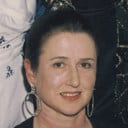Fees for hearing dogs irk
Local bodies in the Wellington region are still inconsistent about the reductions they offer in dog registration fees for deaf owners, says the New Zealand Association of the Deaf.
Under legislation introduced last year, dog owners with hearing loss can obtain a remission or reduction in the annual dog registration fee in certain circumstances.
Inconsistent
“Some local councils have not yet caught up with the act, and the situation in the greater Wellington region is inconsistent and confusing,” said the association’s field officer, Mrs Pat Dugdale.
“In Wellington City and in Tawa the fee for dogs for the blind and deaf is $1, in Kapiti $10 and in Upper Hutt $12.50.
“Lower Hutt and Porirua city councils have not yet recognised the right of the deaf to any reduction in fees,” she said.
In the same way as guide dogs are used by the blind, hearing-ear dogs can be trained to alert their owners to noises.
Rebate
Mrs Dugdale said local bodies determined the level of rebate but the fee for hearing-ear dogs had to be set on the same basis as that for guide dogs for the blind.
Deaf people wanting to apply for the reduction have to fill in an application form and supply a trained dog certificate from the field office for the deaf in the DIC building in Wellington or any branch of the Association for the Deaf.
- Deaf Organisations
- TV/Media
- Other







